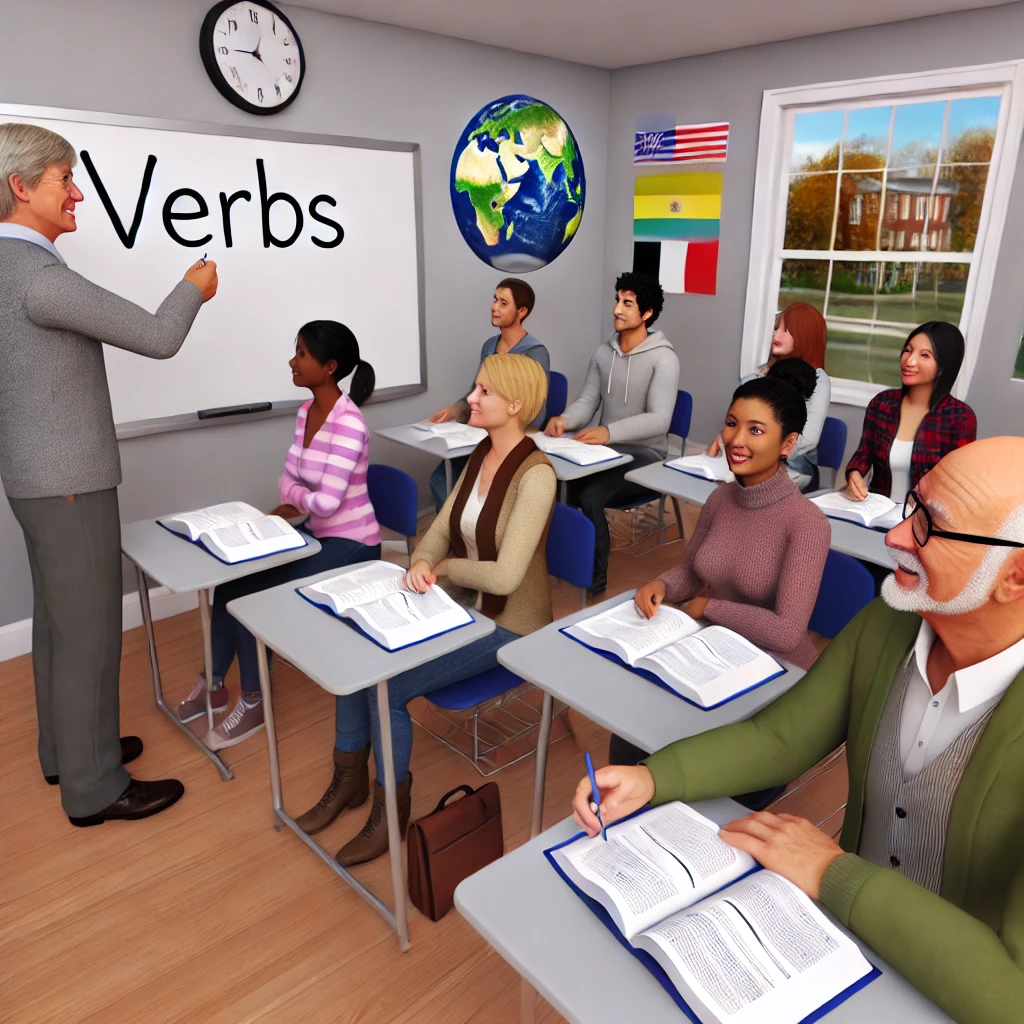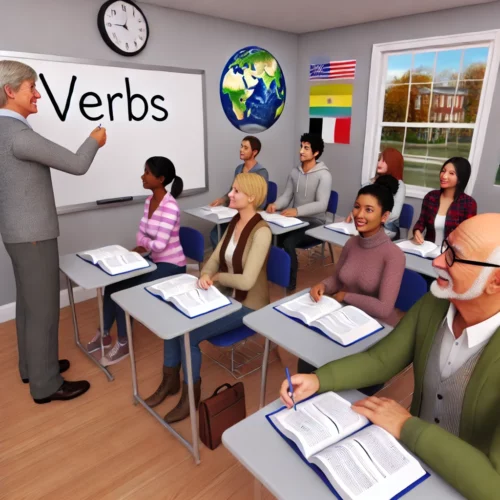Explore essential strategies for teaching verbs ESL students need to learn. Discover tips, activities, and resources to help beginner English learners master verbs effectively.

Teaching verbs is a fundamental step in helping ESL students build their English language skills. Verbs are the backbone of communication, enabling students to express actions, thoughts, and feelings.
But where do you start when introducing verbs to beginner learners?
In this article, we’ll dive into the most important verbs ESL students need to learn, effective teaching strategies, and engaging activities to make learning verbs fun and practical for your students. Whether you’re teaching in a classroom or online, these tips will empower you to guide your students toward fluency with confidence.
Regular verbs might just be my best friends when teaching English to beginners. They follow this predictable pattern, which gives learners something to hold on to as they start their journey.
Think about verbs like ‘walk’, ‘play’, or ‘watch’. They all transform in the same way when you switch them between past, present, and future tenses. This uniformity is a great way for students to build confidence in their language skills early on.
To make learning easier, I often use color-coded tables. I find that visuals can help students make connections between different forms. It’s all about making it simple and less overwhelming.
Games are another ace up my sleeve. I’ve seen how interactive activities can turn a dry lesson into something lively. When students are having fun, they’re more likely to remember what they’ve learned.
Regular verbs are the stepping stones. Once students get these down, they can tackle more challenging aspects of English with a sense of competence and excitement. Mastering these fundamentals opens up a new world of expression and understanding.
Navigating the Complexity: Introducing Irregular Verbs
Irregular verbs are a challenge every English learner faces. Unfortunately, they don’t follow a neat pattern. Each one has its quirks, making them a bit of a puzzle.
Students often ask why these verbs are so random. My go-to explanation? English is a wild language, full of exceptions. But that’s what makes mastering it so rewarding.
Start with the high-frequency irregular verbs. Focus on words they’ll use every day, like ‘go’, ‘come’, ‘see’, and ‘eat’. These are crucial for basic communication and day-to-day conversations.
One trick I share with my students is using stories or mnemonics. For example, creating a funny story involving the verbs can make them stick in memory. Mnemonics are also a great way to lock those tricky words in their minds.
Common mistakes are part of the learning curve. Encourage students to spot their own errors and learn from them. Use real-world examples to show the correct forms in action. For instance, role-playing exercises can demonstrate the right and wrong ways to use these verbs.
Ultimately, irregular verbs are tricky, but with the right mix of theory and practice, students can navigate them with greater ease. A little patience and a bit of humor go a long way in helping them overcome these hurdles.
The Three Pillar Verbs: ‘To Be’, ‘To Do’, and ‘To Have’
‘To be’, ‘to do’, and ‘to have’ are verbs that truly hold up the language. They’re everywhere—introducing oneself, stating facts, asking questions.
Start with ‘to be’. It’s a shape-shifter with forms like ‘am’, ‘is’, ‘are’, not to mention ‘was’ and ‘were’. Focus on these transformations in simple exercises first. Run through sentences like ‘I am a teacher’ or ‘They are happy’. Let them practice swapping positives to questions: ‘Are they happy?’
Next comes ‘to do’. It’s all about action and negation. It supports other verbs and stands alone—think ‘I do my homework’ or ‘Do you know her?’. Teach them to insert ‘do’ for questioning or negating. Watch them surprise themselves!
‘To have’ is another daily powerhouse, dealing with possession and obligation. Present basics like ‘I have a book’ and past twists like ‘I had a cold’. Use common phrases for students to visualize belongings or responsibilities.
To cement learning, I rely on active participation. Provide a list of mixed sentences for students to flip between states: make them change “Julie has a pen” into ‘Does Julie have a pen?’ and then ‘Julie doesn’t have a pen’.
Persistence is key. The more they practice, the more intuitive these verbs become. Many former students have told me how getting these verbs down opened up English for them.
While these verbs seem basic, they’re involved in some of language learning’s biggest transformations. Emphasize their everyday relevance and watch students catch on.
Transformative Techniques: Learning Verbs Through Context
Verbs are not just about grammar; they’re tools for expression and understanding. Using them in a practical setting can immensely benefit students. Context-based learning is where the magic happens.
Taking verbs out of isolation and putting them in real situations makes learning dynamic. Create scenarios students might face, like ordering at a restaurant or checking into a hotel. These are the moments when language becomes real.
When students use verbs like ‘to be’, ‘to do’, and ‘to have’ within culturally-rich settings, they grasp nuances and subtleties that textbooks can’t cover. Explore idiomatic expressions that use these verbs, like “to be cool with” or “to have a blast.”
Another powerful method is role-playing. Students take on personas and play out scenes. In this way, lessons become memorable as learners actively participate rather than passively consume information.
Share long-term benefits with students. Once they get comfortable using verbs correctly in different contexts, their confidence grows. They’ll find conversations flowing faster and their comprehension improving significantly.
Former students often return, sharing how mastery of these verbs has made language learning less intimidating. They find breaking the language into everyday chunks makes a difference.
It’s rewarding to guide learners in seeing verbs as keys to unlocking both essential and exciting parts of English. Focus on how these small steps in context lead to giant leaps in fluency.
Leave questions and comments in the space below.


This blog provides a comprehensive and engaging guide for teaching verbs to ESL students, highlighting their critical role in language acquisition. The practical tips, like starting with regular verbs and progressing to irregular ones, are well-structured for beginner learners. Techniques such as using visuals, games, and context-based learning make the lessons interactive and memorable. Additionally, the focus on essential verbs like “to be,” “to do,” and “to have” as foundational pillars is particularly insightful. Overall, the blog successfully equips educators with effective strategies to boost students’ confidence and fluency.
thanks for your comments.